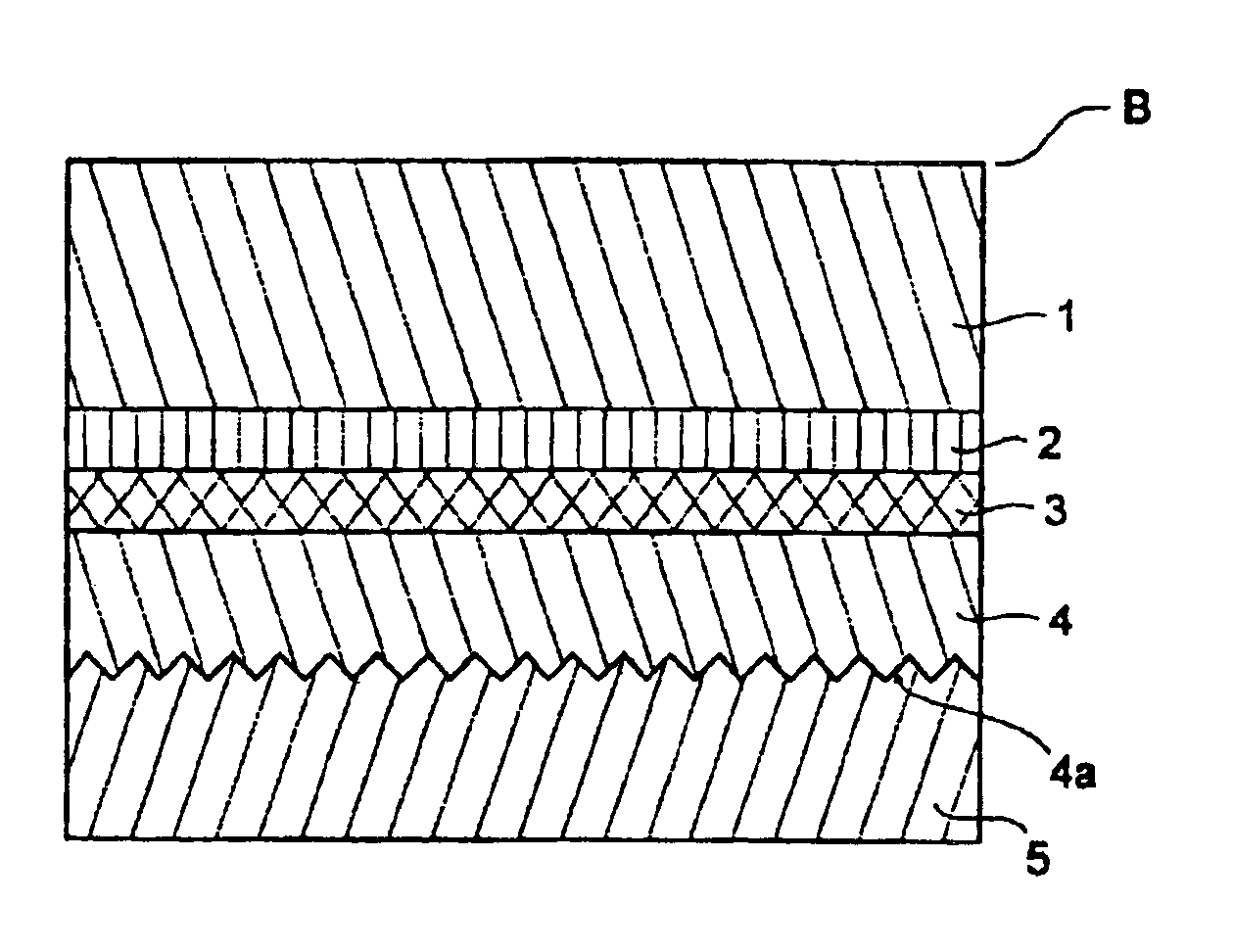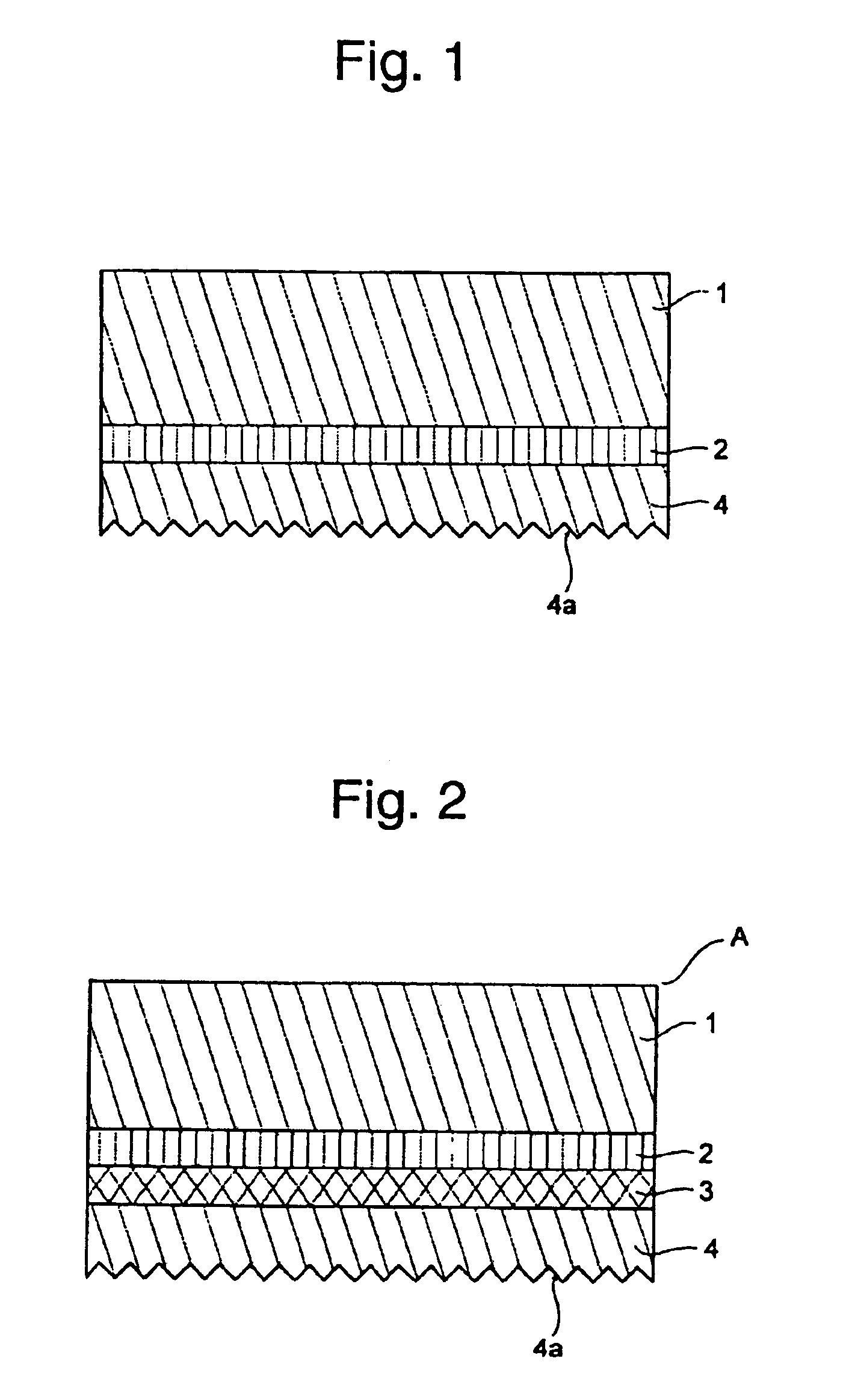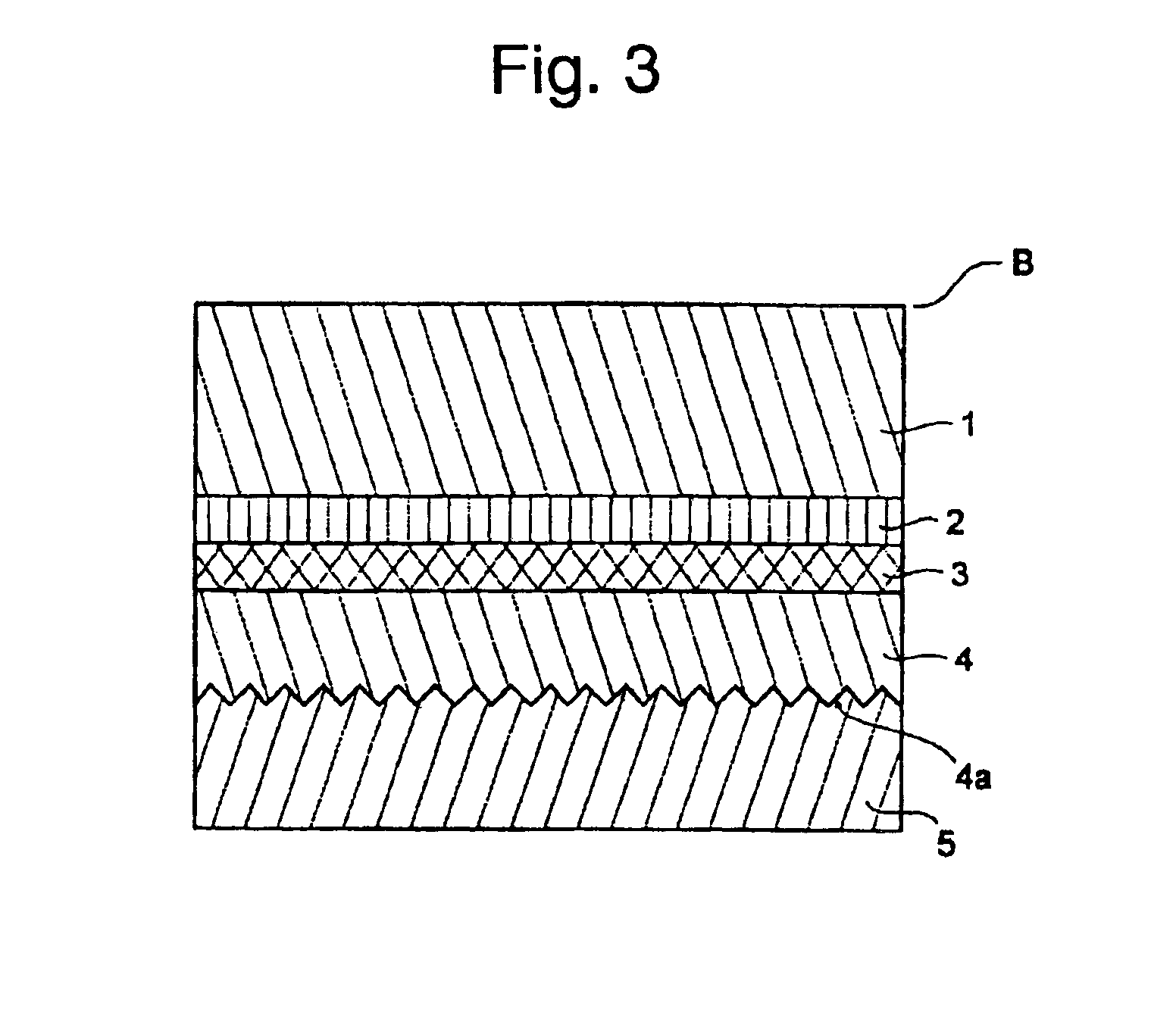Copper foil for high-density ultrafine printed wiring boad
a copper foil and ultra-fine technology, applied in the field of ultra-fine copper foil, can solve the problems of insulating malfunction, long time required for etching treatment to remove copper nodules, and open circui
- Summary
- Abstract
- Description
- Claims
- Application Information
AI Technical Summary
Benefits of technology
Problems solved by technology
Method used
Image
Examples
example 1
[0091]On a shiny side (shiny side roughness Rz=1.4 μm) of an untreated electrodeposited copper foil with a thickness of 35 μm (a carrier foil 1), an electroplating of chromium was carried out continuously to form a chromium-plating layer (a release layer 2) with an attached amount of 0.50 mg / dm2. Successively, on this chromium-plating layer, Ni—P electroplating was carried out in an aqueous solution having a pH of 4.0 and containing 40.0 g / l of nickel and 1.5 g / l of phosphorus under conditions of current density of 6 A / dm2 to form a diffusion preventive layer. The attached amounts at this moment were 9.1 mg / dm2 for nickel and 0.9 mg / dm2 for phosphorus.
[0092]In addition, on this diffusion preventive layer, electroplating was carried out to form an ultra-thin copper layer with a thickness of 3 μm, using a copper sulfate plating solution containing 80 g / l of copper and 160 g / l of sulfuric acid under current density of 30 A / dm2. And then, surface-roughening treatment was carried out in ...
example 2
[0094]Formation of a release layer 2, formation of a diffusion preventive layer 3, electrochemical deposition of copper, surface-roughening treatment, anticorrosive treatment and surface treatment were carried out in the same manner as in Example 1, except that a diffusion preventive layer was formed by Ni—Co electroplating in an aqueous solution having a pH of 3.5 and containing 40.0 g / l of nickel and 7.5 g / l of cobalt under conditions of current density of 6 A / dm2. Attached amounts by plating of the diffusion preventive layer 3 were 3.9 mg / dm2 for nickel and 6.1 mg / dm2 for cobalt.
example 3
[0095]Formation of a release layer 2, formation of a diffusion preventive layer 3, electrochemical deposition of copper, surface-roughening treatment, anticorrosive treatment and surface treatment were carried out in the same manner as in Example 1, except that a diffusion preventive layer was formed by electrolytic Co—Cu plating in an aqueous solution having a pH of 3.5 and containing 8.0 g / l of cobalt and 4.0 g / l of copper under conditions of current density of 2.0 A / dm2. Attached amounts by plating of the diffusion preventive layer were 8.8 mg / dm2 for cobalt and 1.2 mg / dm2 for copper.
PUM
| Property | Measurement | Unit |
|---|---|---|
| particle size | aaaaa | aaaaa |
| thickness | aaaaa | aaaaa |
| thickness | aaaaa | aaaaa |
Abstract
Description
Claims
Application Information
 Login to View More
Login to View More - R&D
- Intellectual Property
- Life Sciences
- Materials
- Tech Scout
- Unparalleled Data Quality
- Higher Quality Content
- 60% Fewer Hallucinations
Browse by: Latest US Patents, China's latest patents, Technical Efficacy Thesaurus, Application Domain, Technology Topic, Popular Technical Reports.
© 2025 PatSnap. All rights reserved.Legal|Privacy policy|Modern Slavery Act Transparency Statement|Sitemap|About US| Contact US: help@patsnap.com



